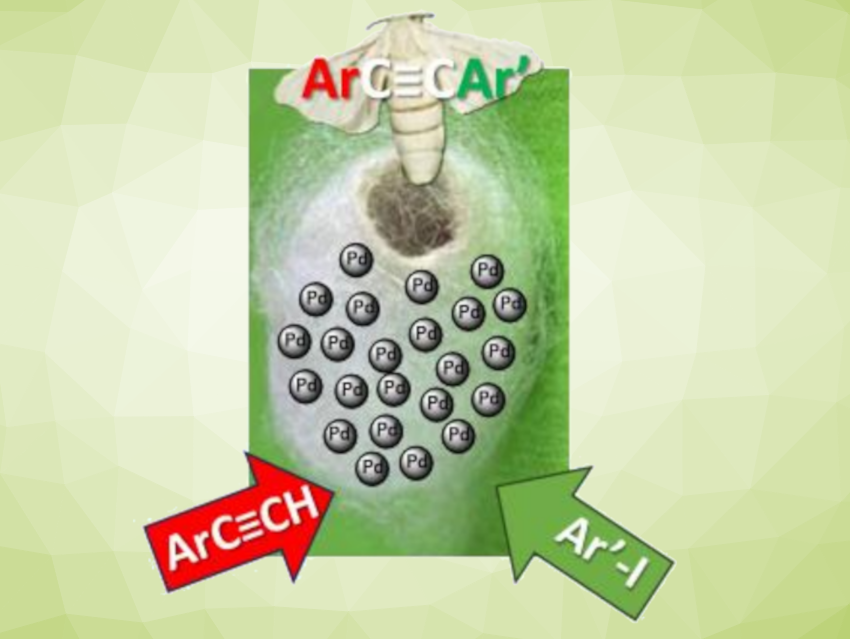Palladium catalysis is an important tool in organic synthesis. One widely used example of this is the Sonogashira reaction, a palladium-catalyzed cross-coupling between terminal alkynes and aryl or vinyl halides with a copper co-catalyst. Using homogeneous Pd catalysts generally works well, but recovering and reusing the catalysts, which are based on an expensive metal, can be difficult. In contrast, supported catalysts in which Pd species are deposited on a solid material are easy to recover and reuse. Silk fibroin (SF), a protein made by silkworms, is a promising support material for Pd catalysts. However, examples of the use of Pd catalysts supported on protein biopolymers such as SF in Sonogashira reactions are rare.
Laura A. Aronica, Università di Pisa, Italy, Gianluca M. Farinola, Università degli Studi di Bari Aldo Moro, Bari, Italy, and colleagues have used a palladium catalyst supported on silk fibroin (Pd/SF) in Sonogashira coupling reactions of a wide range of aryl iodides and terminal alkynes. The team first “degummed” silk fibroin filament, i.e., removed the sericin film which covers the native filament. The degummed SF was soaked in a boiling aqueous solution of PdCl2 to obtain Pd(II)-impregnated fibers. The fibers were then subjected to several treatment steps with sodium ascorbate and sodium borohydride as reducing agents to give the desired catalyst.
The resulting Pd/SF catalyst is air-stable and has a low metal loading of 0.25 mol%. It was used in Sonogashira couplings at 90 °C under copper-free conditions, using triethylamine as a base and a water/ethanol solvent mixture. Under these conditions, the desired coupling products were obtained in good yields. The catalyst was also used for the synthesis of 2-arylbenzofurans via Sonogashira-Cacchi type annulations. According to the researchers, the Pd/SF catalyst can be easily reused at least four times without a significant loss in catalytic activity.
- Palladium Supported on Silk Fibroin as Efficient Catalyst for Sonogashira Coupling and Sonogashira‐Cacchi Type Annulation,
Gianluigi Albano, Giorgio Rizzo, Fabio Salvati, Emanuela Pitzalis, Carola Ricciardelli, Laura Antonella Aronica, Gianluca M. Farinola,
Eur. J. Org. Chem. 2024.
https://doi.org/10.1002/ejoc.202400632



